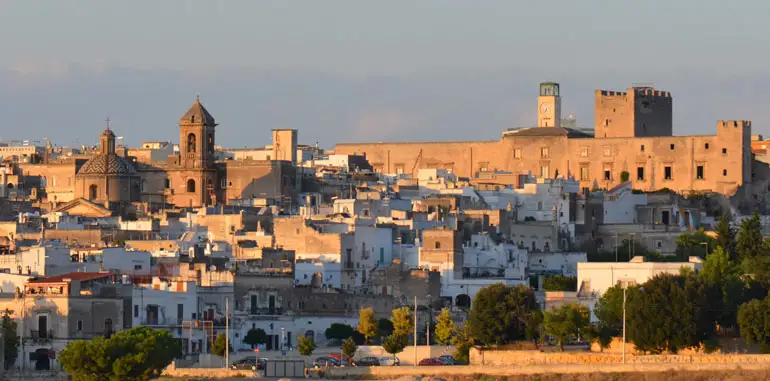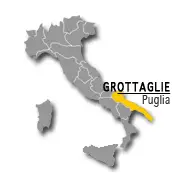GROTTAGLIE


Since the Middle Ages, Grottaglie has been known for the production of Italian pottery and especially for its functional ceramics: large jars, pitchers, urn and pots.
One of the craftsmen we met in Grottaglie told us that until a few decades ago, at the end of every Summer, the roofs of the houses in the “District of Ceramics” were still loaded with red–brown vessels, ready to be sold to merchants arriving in the city from all over Italy. Over the centuries, the production of Grottaglie ceramics has slowly evolved. Colored glazes have been added to utilitarian pottery, more refined decoration techniques have been introduced and ornamental ceramic objects, like the famous “Pumi”, have been adding to the fame of Grottaglie pottery.
Grottaglie is in the south of Puglia, just in the middle of the Salento area, one of the most beautiful Italian regions: a landscape of red soiled farmland, dotted with ancient white houses, the Masserie, huge olive trees and, everywhere, the blue, clear water of the Mediterranean sea.
The abundance of red clay in the area promoted the production of pottery more than a thousand years ago. Over time an increasing number of ceramicists settled along the Saint George ravine, setting up their studios and kilns in natural caves. This“District of Ceramics” is still intact and absolutely worth a visit!
The story of Grottaglie ceramics is wonderfully narrated by the artifacts hosted in the local Museum. It all started in the 8th century a.C., when the rich red clay that was so abundant in the area was first used to make the necessary vessels for dayly life.
Pitchers, jars and urn were handmade to carry or store water, wine, oil, vinegar and food supplies. This is actually the origin of the “capasone” a large jar that was used to store the excellent wine produced in the area and could hold up to 53 gallons. No household could do without one or more capasone. The antique ones are today precious collectors’ items and decorate the gardens and the Masserie, charming white flat-roofed houses.
The use of clay vessels was not restricted to food and drink. Clay pots were made in different shapes and sizes to cook or to wash linens, dishes and vegetables, chamber-pots - the “nicissario” meaning the necessary, the essential - were also made of clay and so were the chimney-pots and the water pipes and the tiles… In a word, the red clay of Grottaglie was the local gold mine.
At the beginning dinnerware and tableware were certainly a minor activity for Grottaglie craftsmen. However they slowly began to improve the esthetics of their artifacts adding colored glazes to their dinner plates, pitchers and serving bowls and creating original designs.
Around the 17th century, the range of tableware expanded and some items became very popular, like the “jugs with the secret” that were particularly intriguing for their ingenious mechanisms that made it almost impossible to pour liquids.
Today Grottaglie craftsmen make by hand mostly dinnerware and decorative ceramics, some of them really unique, like the “Pupe con i baffi” (dolls with moustache), the holy water fonts and the pumi.
Yes, The Pumi! When we visited Grottaglie we were very much intrigued by the rounded ceramic objects that adorned the balconies and the terraces of the houses in the old district. We noticed that they were invariably placed in pairs at both ends of the every balcony, no matter if the house was old and shabby or newly restored, simply built or richly decorated.
We asked the craftsmen we met about those beautiful ornaments and we had the full story. They are Pumi, from the Latin name pomum, fruit. Shaped like a bud resting on leaves of acanthus, the Pumo is a symbol of new life and prosperity. It stands against and protects the house from evil, that’s why no family can do without a set of Pumi.
Pumi are hand made in a variety of colors and shapes, depending on the whim of the artist or the commission received by the family that will stick it into the iron spikes built in the balcony railings, or place them in a place of honor at home. In both cases, the Pumi will be proudly handed down to the next generation.